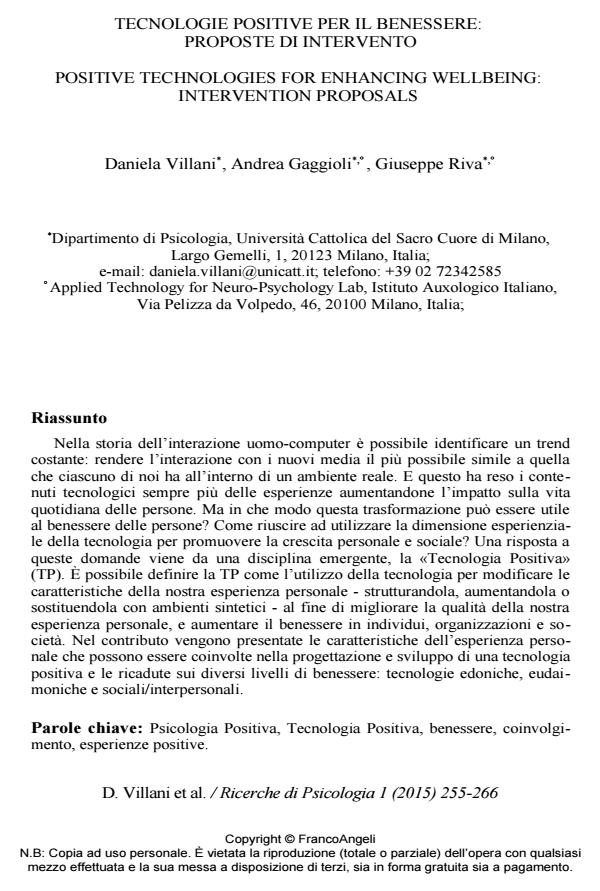Positive technologies for enhancing wellbeing: intervention proposals
Journal title RICERCHE DI PSICOLOGIA
Author/s Daniela Villani, Andrea Gaggioli, Giuseppe Riva
Publishing Year 2015 Issue 2015/1
Language Italian Pages 12 P. 255-256 File size 221 KB
DOI 10.3280/RIP2015-001016
DOI is like a bar code for intellectual property: to have more infomation
click here
Below, you can see the article first page
If you want to buy this article in PDF format, you can do it, following the instructions to buy download credits

FrancoAngeli is member of Publishers International Linking Association, Inc (PILA), a not-for-profit association which run the CrossRef service enabling links to and from online scholarly content.
Information and communication technologies are widely and rapidly spreading in people’s daily lives, supporting personal experiences of various kinds. By manipulating the quality of the experience, it’s possible to promote individual resources and to increase the level of well-being. But what is the possible role of the mass proliferation of digital devices in supporting well-being? The Positive Technology, the scientific and applied approach to the use of technology for improving the quality of our personal experience, helps us to meet this challenge. In this contribution we present the characteristics of personal experience that may be involved in the design and development of positive technologies and their effects on different levels of well-being: hedonic, eudaimonic and social /interpersonal technologies.
Keywords: Positive Psychology, Positive Technology, well-being, engagement, positive experiences.
- 2017 International Conference on Virtual Rehabilitation (ICVR) Vera Colombo, Davide Baldassini, Stefano Mottura, Marco Sacco, Maura Crepaldi, Alessandro Antonietti, pp.1 (DOI:10.1109/ICVR.2017.8007457)
Daniela Villani, Andrea Gaggioli, Giuseppe Riva, Tecnologie positive per il benessere: proposte di intervento in "RICERCHE DI PSICOLOGIA " 1/2015, pp 255-256, DOI: 10.3280/RIP2015-001016